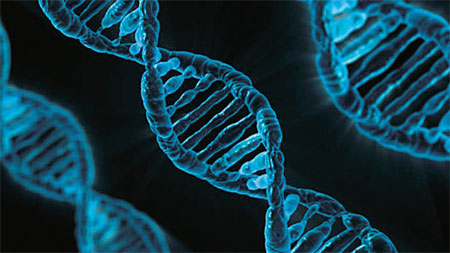- California Assembly OKs highest minimum wage in nation
- S. Korea unveils first graphic cigarette warnings
- US joins with South Korea, Japan in bid to deter North Korea
- LPGA golfer Chun In-gee finally back in action
- S. Korea won’t be top seed in final World Cup qualification round
- US men’s soccer misses 2nd straight Olympics
- US back on track in qualifying with 4-0 win over Guatemala
- High-intensity workout injuries spawn cottage industry
- CDC expands range of Zika mosquitoes into parts of Northeast
- Who knew? ‘The Walking Dead’ is helping families connect
Junk DNA’s changing role
 For decades, scientists believed that most of the human genome was useless. They believed that this part of DNA, deemed “junk DNA,” was a useless remnant of evolution despite the fact it makes up about 98.8% of all genetic information.
For decades, scientists believed that most of the human genome was useless. They believed that this part of DNA, deemed “junk DNA,” was a useless remnant of evolution despite the fact it makes up about 98.8% of all genetic information.
However, in the past few years, many studies revealed that this DNA is, in fact,essential to the human body.
For example, a part of this noncoding DNA has been theorized to help with the development of a healthy zygote and brain development.
In January 2015, Francis Collin, the director of the National Institute of Health, revealed that the term “junk DNA” is incorrect. This event caused a lot of controversy throughout the modern science world just as it did over the past 200 years. However, slowly but surely, recent studies examining the noncoding genome reveal that there is a lot more to DNA than originally perceived.
The truth behind junk DNA was discovered in John Rinn’s lab of Harvard’s Department of Stem Cell and Regenerative Biology. Rinn, who oversees more than a dozen of projects that prove that noncoding DNA is essential for human life, has studied the RNA products of the DNA genome because of his belief that these protein-making RNA particles are vital to major biological functions.
Despite his initial lack of faith in the project, he partnered with Howard Chang to investigate an RNA particle called hot air that was only produced below the waist.
After a series of experiments, Rinn and Chang discovered that this RNA molecule holds much significance, as it helps with the silencing of the genes. This proved that junk DNA is actually “a massive control panel with millions of switches regulating the activity” of the genes (N.I.H. Project).
As this project continues, the mystery of noncoding DNA will unravel and reveal the many functions that are performed by the genome. Consequently, this “junk” DNA will have some use after all.
 |
Jennifer No West Ranch High School 9th Grade |













kelly
November 27, 2017 at 12:55 PM
yes..I like the basic concepts behind Second Life but it seems incredibly outdated and when I played it was intensely non-intuitive / user friendly to an extent that made EVE look like a game for toddlers. thanks from
togel online